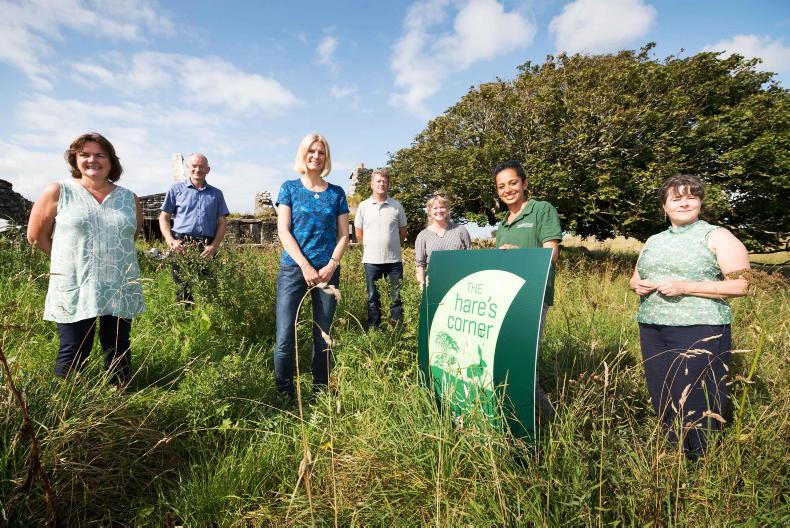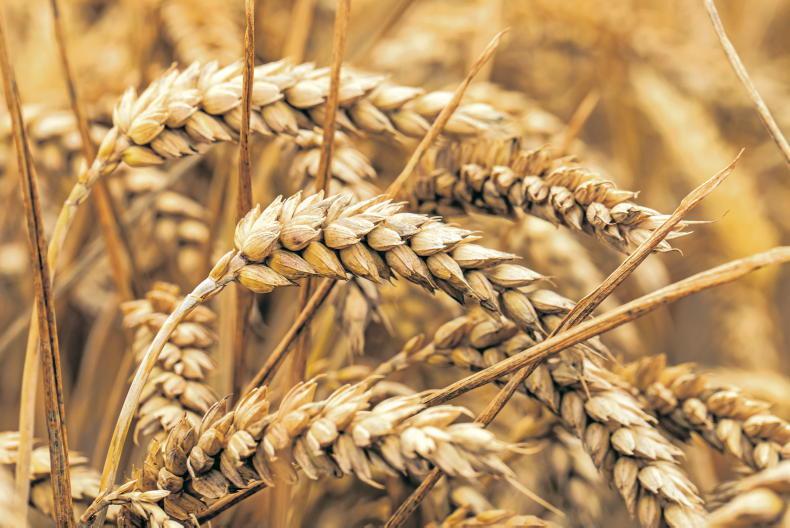Entering into a farm partnership is like starting any new relationship, in many ways.
“If you ignore the little signs of incompatibility at the beginning it will only get worse when you hit a challenge,” says Clare O’Keeffe- a farmer, tutor, mediator and founder of Succession Ireland- who knows all about the difficulties and challenges that can arise during the duration of a farm partnership.
There has been an increase in people entering into a registered farm partnership (RFPs) due to farmers being more aware of the benefits included. As of June 2022, there were 3,563 ?RFPs on the register according to Teagasc.
“Partnerships are so positive and they are promoted,” says Clare. “They make huge sense both financially and for the viability of two or more enterprises and bringing people together. They do have a very valid place in the future of Irish agriculture.”
There are, however, many things to consider before entering into a farm partnership, and challenges along the line can create conflict. In some cases, these might not be resolved and result in the breakdown of the agreement, with legal consequences.
The main challenges
One of the main problems that Clare sees among clients is when a small issue isn’t addressed in the beginning, it “snowballs” into a bigger problem.
“[It] is not generally about finance,” says Clare, “the identity of one may feel undermined by the other”.
As most people don’t want to hurt someone else, they refrain from saying anything at all. But?
“It’s better to put it out on the table,” says Clare. “If this situation arose, how would you like it to be addressed? There is no right or wrong way, but it just needs to be addressed. There will be pinch points so you need to ask yourself, how can we address them with respect to all parties involved?”
The challenge with family partnerships is the emotional aspect. There is much more at stake, explains Clare.
“You’re living with the people you are in partnership with,” she says.
Partnerships are the beginning of a succession process for many but, “there can be a misconception, that the partnership is purely for certain grant purposes. The long-term plan might not have been discussed” resulting in a misunderstanding in the earlier stages.
Exit strategy
At the moment, the exit clause is the shortest part of the agreement. Many people just copy and paste it from existing templates, but Clare emphasises that it has to be tailored to each farm and each partnership agreement.
“Every line needs to be read. You don’t sign the last line and assume some consultant or advisor looked over it,” she says.
It is your responsibility to understand the information outlined is applicable to your individual situation. “If something doesn’t work out, what is plan B? When the partnership ends what do you want your farm to look like? Do you want to be able to continue farming it into the future?”
The partnership is perfect when everything is fine, but when challenges arise you need to address them and not ignore them. Having open communication and understanding will enable you to work through differences effectively.
Advice for preventing a partnership breakdown
1 Address assumptions: What are you expecting in the partnership agreement? Is your role a part-time or full-time role? “The assumptions can be quite unrealistic at times,” says Clare. It is really important to lay everything on the table, as when things go wrong, finance alone won’t fix it.
2 Resolve conflict: Make an agreement to discuss things regularly. Have a discussion about any issues or problems that arise on a routine basis. If a third party is needed to resolve an issue Clare advises, “Go back to the person who teased [the partnership] out with you in the beginning. Most likely there was an advisor or consultant involved in the partnership.” They know the individual agreement and personalities involved so keep in touch with them. It might be a good idea to have yearly reviews.
3 Have shoulder-to-shoulder discussions: Some farmers find it easier to talk outdoors while walking eg when looking at stock or assessing grass. If there are any concerns or problems you are having, it’s best to talk about them while they are small issues.
4 Respect each other: It’s essential to respect all differences whether it’s from a family perspective or with unrelated parties. You have to share mutual respect in this vision together. “How do you show respect to the other person?” Clare asks. “By listening.”
5 Identify why you’re going into a partnership: Don’t go into a partnership based on a tax break. “This is the last reason I would be suggesting for people to go into a partnership,” states Clare. “It has to be workable; would you really want to be in a partnership with this person? Get to know them and see if you are compatible.”
6 Have an on-farm visit before any documents are signed: Arrange an on-farm meeting to discuss the enterprise, ensuring the farm is run in the same manner you would want yours to be. It is important to ask yourself what role do you want to take. “Do you see yourself as the dominant one or as equal? Tease out the differences and respect the differences,” advises Clare.
7 Embrace unforeseen challenges: While there will always be challenges in a business structure, once you have the right attitude to embrace and work them together, you will be able to navigate through them.
Clare helps families by coordinating succession conversations and mediating difficult farm family conversations. For more information visit https://www.successionireland.ie/
Benefits of
joining a registered farm partnership [RFP]
Taxation incentives
Maximise low-rate income tax band: Depending on the profit-sharing ratio, each partner may avail of the low-rate income tax band.
Access to Young Trained Farmer Stock Relief: A young trained farmer can claim 100% stock relief on the increased stock value of his/her equivalent share of the farm profit. The maximum relief available under this scheme, the stamp duty exemption scheme, and the Succession Farm Partnership Scheme is €70,000.
Access to enhanced stock relief for the parents: Enhanced stock relief is available at a rate of 50%. €15,000 is the maximum that can be claimed over a three-year period.
The Young Farmers Scheme: An application can be made where at least one person in the RFP qualifies as a young trained farmer. Young Farmer National Reserve: Where funding is available, a young farmer in a partnership may apply to this scheme to receive a top-up on low-value entitlements (less than the national average), or apply for new entitlements on lands that have no entitlements associated with them. Targeted Agricultural Modernisation Scheme (TAMS II): RFPs successfully registered with the DAFM may be eligible for a double investment ceiling under TAMS II. The investment ceiling will then be raised from €80,000 to €160,000: 40% grant aid up to €160,000, where the RFP has no qualifying young trained farmer. Where the RFP has one partner qualifying as a young trained farmer, grant aid of 60% on the first €80,000, and 40% grant aid on the second €80,000 is available.Collaborative Farming Grant Scheme: Grant aid of 50% is payable on the establishment costs of setting up, maximum grant of €2,500 is available.Where farmers have farmed on their own prior to forming an RFP, they are eligible to receive payments due to them under the Area of Natural Constraints (ANC) scheme, the Green, Low-carbon, Agri-environment Scheme (GLAS), and the Organic Farming Scheme.
Read more
Profiled: New west Cork Teagasc regional advisory manager Grainne Hurley
New ERSI research finds significant ‘migrant wage gap’
Entering into a farm partnership is like starting any new relationship, in many ways.
“If you ignore the little signs of incompatibility at the beginning it will only get worse when you hit a challenge,” says Clare O’Keeffe- a farmer, tutor, mediator and founder of Succession Ireland- who knows all about the difficulties and challenges that can arise during the duration of a farm partnership.
There has been an increase in people entering into a registered farm partnership (RFPs) due to farmers being more aware of the benefits included. As of June 2022, there were 3,563 ?RFPs on the register according to Teagasc.
“Partnerships are so positive and they are promoted,” says Clare. “They make huge sense both financially and for the viability of two or more enterprises and bringing people together. They do have a very valid place in the future of Irish agriculture.”
There are, however, many things to consider before entering into a farm partnership, and challenges along the line can create conflict. In some cases, these might not be resolved and result in the breakdown of the agreement, with legal consequences.
The main challenges
One of the main problems that Clare sees among clients is when a small issue isn’t addressed in the beginning, it “snowballs” into a bigger problem.
“[It] is not generally about finance,” says Clare, “the identity of one may feel undermined by the other”.
As most people don’t want to hurt someone else, they refrain from saying anything at all. But?
“It’s better to put it out on the table,” says Clare. “If this situation arose, how would you like it to be addressed? There is no right or wrong way, but it just needs to be addressed. There will be pinch points so you need to ask yourself, how can we address them with respect to all parties involved?”
The challenge with family partnerships is the emotional aspect. There is much more at stake, explains Clare.
“You’re living with the people you are in partnership with,” she says.
Partnerships are the beginning of a succession process for many but, “there can be a misconception, that the partnership is purely for certain grant purposes. The long-term plan might not have been discussed” resulting in a misunderstanding in the earlier stages.
Exit strategy
At the moment, the exit clause is the shortest part of the agreement. Many people just copy and paste it from existing templates, but Clare emphasises that it has to be tailored to each farm and each partnership agreement.
“Every line needs to be read. You don’t sign the last line and assume some consultant or advisor looked over it,” she says.
It is your responsibility to understand the information outlined is applicable to your individual situation. “If something doesn’t work out, what is plan B? When the partnership ends what do you want your farm to look like? Do you want to be able to continue farming it into the future?”
The partnership is perfect when everything is fine, but when challenges arise you need to address them and not ignore them. Having open communication and understanding will enable you to work through differences effectively.
Advice for preventing a partnership breakdown
1 Address assumptions: What are you expecting in the partnership agreement? Is your role a part-time or full-time role? “The assumptions can be quite unrealistic at times,” says Clare. It is really important to lay everything on the table, as when things go wrong, finance alone won’t fix it.
2 Resolve conflict: Make an agreement to discuss things regularly. Have a discussion about any issues or problems that arise on a routine basis. If a third party is needed to resolve an issue Clare advises, “Go back to the person who teased [the partnership] out with you in the beginning. Most likely there was an advisor or consultant involved in the partnership.” They know the individual agreement and personalities involved so keep in touch with them. It might be a good idea to have yearly reviews.
3 Have shoulder-to-shoulder discussions: Some farmers find it easier to talk outdoors while walking eg when looking at stock or assessing grass. If there are any concerns or problems you are having, it’s best to talk about them while they are small issues.
4 Respect each other: It’s essential to respect all differences whether it’s from a family perspective or with unrelated parties. You have to share mutual respect in this vision together. “How do you show respect to the other person?” Clare asks. “By listening.”
5 Identify why you’re going into a partnership: Don’t go into a partnership based on a tax break. “This is the last reason I would be suggesting for people to go into a partnership,” states Clare. “It has to be workable; would you really want to be in a partnership with this person? Get to know them and see if you are compatible.”
6 Have an on-farm visit before any documents are signed: Arrange an on-farm meeting to discuss the enterprise, ensuring the farm is run in the same manner you would want yours to be. It is important to ask yourself what role do you want to take. “Do you see yourself as the dominant one or as equal? Tease out the differences and respect the differences,” advises Clare.
7 Embrace unforeseen challenges: While there will always be challenges in a business structure, once you have the right attitude to embrace and work them together, you will be able to navigate through them.
Clare helps families by coordinating succession conversations and mediating difficult farm family conversations. For more information visit https://www.successionireland.ie/
Benefits of
joining a registered farm partnership [RFP]
Taxation incentives
Maximise low-rate income tax band: Depending on the profit-sharing ratio, each partner may avail of the low-rate income tax band.
Access to Young Trained Farmer Stock Relief: A young trained farmer can claim 100% stock relief on the increased stock value of his/her equivalent share of the farm profit. The maximum relief available under this scheme, the stamp duty exemption scheme, and the Succession Farm Partnership Scheme is €70,000.
Access to enhanced stock relief for the parents: Enhanced stock relief is available at a rate of 50%. €15,000 is the maximum that can be claimed over a three-year period.
The Young Farmers Scheme: An application can be made where at least one person in the RFP qualifies as a young trained farmer. Young Farmer National Reserve: Where funding is available, a young farmer in a partnership may apply to this scheme to receive a top-up on low-value entitlements (less than the national average), or apply for new entitlements on lands that have no entitlements associated with them. Targeted Agricultural Modernisation Scheme (TAMS II): RFPs successfully registered with the DAFM may be eligible for a double investment ceiling under TAMS II. The investment ceiling will then be raised from €80,000 to €160,000: 40% grant aid up to €160,000, where the RFP has no qualifying young trained farmer. Where the RFP has one partner qualifying as a young trained farmer, grant aid of 60% on the first €80,000, and 40% grant aid on the second €80,000 is available.Collaborative Farming Grant Scheme: Grant aid of 50% is payable on the establishment costs of setting up, maximum grant of €2,500 is available.Where farmers have farmed on their own prior to forming an RFP, they are eligible to receive payments due to them under the Area of Natural Constraints (ANC) scheme, the Green, Low-carbon, Agri-environment Scheme (GLAS), and the Organic Farming Scheme.
Read more
Profiled: New west Cork Teagasc regional advisory manager Grainne Hurley
New ERSI research finds significant ‘migrant wage gap’









SHARING OPTIONS